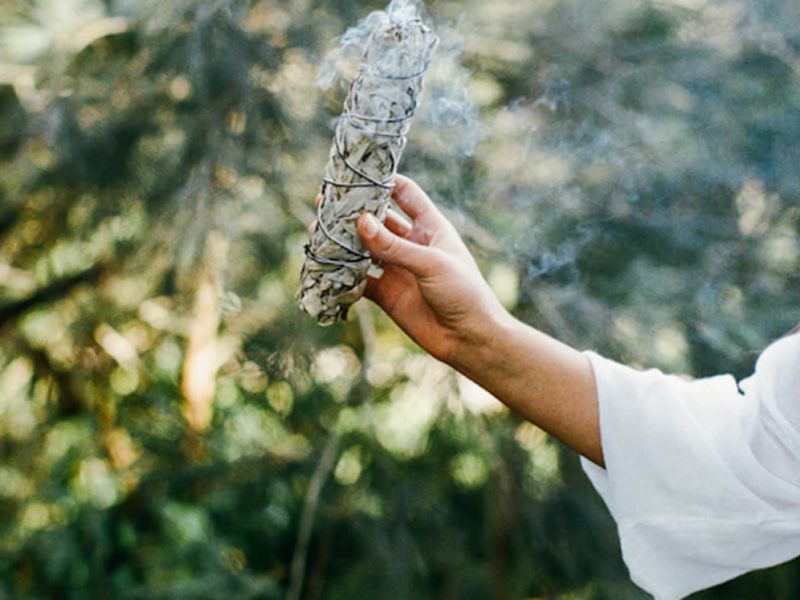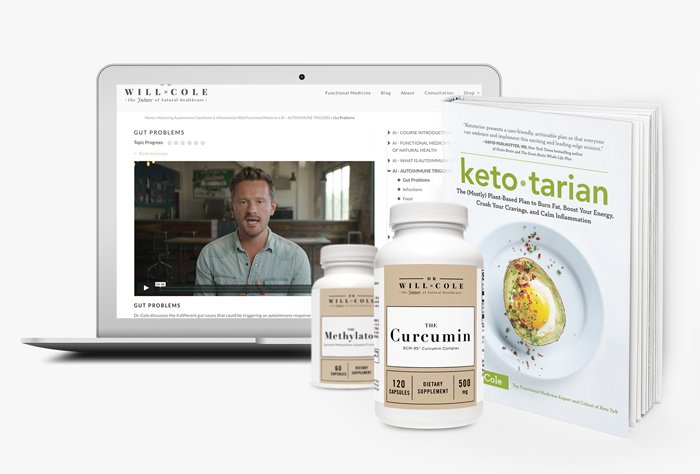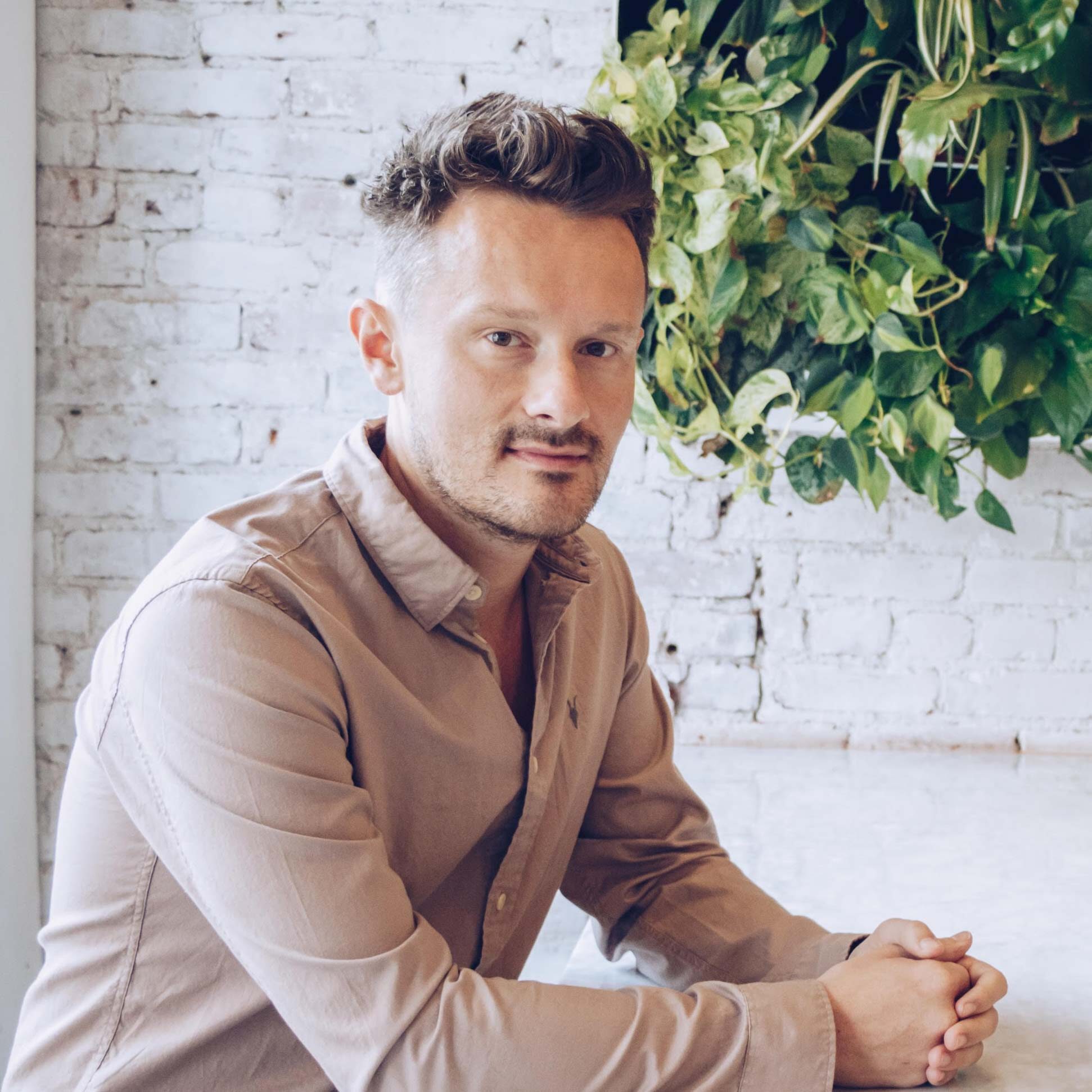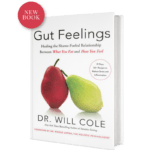Declutter Your Life + Inspire Your Overall Wellness With These Self-Care Tips

Rituals are a part of human history. Ancient people – even our grandparents – honored the sacred to give our lives more meaning and keep our minds focused on something higher than ourselves, whatever that meant to the individual. Life was slower and more deliberate just a few decades ago, and rituals kept us anchored and linked together as families, communities, and humans.
But today, rituals seem to have little room in our sophisticated, evidence-based modern culture. Or do they? Science is finally catching up with antiquity and research has shown that rituals actually seem to be beneficial (1) in more ways than one – these benefits include (2) improving attention, increasing effectiveness, stabilizing emotions, and raising confidence levels.
Article continues below
As a functional medicine practitioner, I also see these same benefits in my patients when I help them cultivate healthy rituals. You don’t have to wait for a special occasion – you can incorporate rituals in your everyday, starting now.
The Danish Concept of Hygge
In Denmark, there is a concept called hygge, pronounced “hoo-guh,” it is defined as “a quality of coziness that brings a feeling of contentment or well-being.” Hygge is about creating a cozy, welcoming, warm home and staying in to enjoy it, so it’s no coincidence that Scandinavians are rated as some of the happiest people in the world. Now, the secret is out. While people have been hygge-ing in Scandinavia for years, hygge has recently become the latest aspiration in the United States and the United Kingdom. Listed as one of the top wellness trends, it cannot be denied any longer: Staying in is the new going out.
The global awareness of the concept of hygge is, I believe, born out of the growing awareness that our way of life is unsustainable. As we are constantly bombarded with information and chronic stress has reached epidemic proportions, something’s going to break if we don’t slow down. In truth, our bodies, emotions, marriages, and bank accounts are already starting to break down under this immense pressure, not to mention health. Modern problems like adrenal fatigue are the physical consequences of this type of lifestyle. Clearly, we need to do something differently.
Enter hygge: cozy, comfy, “let’s slow it down” hygge. The word sounds foreign (because it is) but so does the concept. And yet, you can see it everywhere now, and related trends, like minimalism, digital detoxes, and more people working at home or working fewer hours. This is society’s cry for relief – a time-out, a moment to breathe, a reclamation of the concept of relaxation. Hygge embodies all the things that our souls crave. It is the excuse we have been looking for, to cozy up with a giant fuzzy blanket, wear slouchy clothes, and just chill out.
But hygge doesn’t mean living a sedentary lifestyle (remember, sitting is the new smoking). (3) It’s not about, Netflix marathons and potato chip binges. Instead, here are some better ways to embrace this trend, to make your life a little slower, a little sweeter, and a little less stressful.
14 Hygge-Inspired Rituals To Incorporate Into Your Life Today
1. Create a phone-free space
To take advantage of the surprising stress-relieving qualities of smartphone-free time, set up a smartphone drop-off/charging station that you can use as soon as you walk in the door. Put your phone on silent so you won’t be tempted to check it or lured back to the screen by those seductive beeps and buzzes.
2. Throw next-level parties
Engaging in healthy relationships and being involved in a community of people has been shown (4) to help people live longer, healthier lives. A great way to cultivate relationships with your tribe is by coming together for gatherings focused on wellness that evolve with the seasons. Staying in is not just for when the days are dreary – it’s for every day, when friends come by. Here are some ideas for health-focused social activities:
Green Juice Socials: Swap out your typical wine – or beer – tasting party with a delicious green juice social. Have everyone bring a recipe to share and corresponding ingredients to make a giant batch of juice for everyone to sample. Have additional recipe cards on hand for people to write down their favorites. Don’t forget healthful homemade snacks to munch on!
Yoga Soiree: Soak in that vitamin D by participating in outdoor yoga. Gather a group together for an afternoon of sun salutation on the lawn or patio. Spend time listening to the silence and little noises of nature as your mind and body take advantage of the wellness benefits of yoga. This party can work well during the cold months as well, if you have a large room. If you have a yoga teacher friend, as them to direct the action. Or, each person could pick their favorite yoga videos (queue up the YouTube) and the group can try snippets of each.
Meal Prep Bash: One of the last things people want to do after work is worry about dinner and cooking (and cleaning it all up!) Make a list of some delicious freezer crockpot meals filled with whole ingredients and have everyone bring a different ingredient. Turn up the relaxing music and get chopping!
Terrarium Building Event: Having plants around the house is one of the most natural ways to purify the air you breathe. Plants also bring the outdoors in, which can give you a mood boost during the long winter months when it may be more difficult to grab time outdoors. Go to your local home and garden store and pick up (or order off a website) some beautiful plants and have friends over for a terrarium building event. Pick the plants that speak to you and arrange them in a way that you love.
3. Trade comfort food for super-food
Elevate your traditional comfort food for updated versions of your favorite dishes.
- Substitute chicken zoodle bone broth soup for chicken noodle soup.
- Try adaptogenic tonics instead of hot chocolate, alcohol, and soda.
- Add bone broth to traditional recipes for a gut-healing boost.
- Have low-sugar, grain-free granola instead of your breakfast cereal or snack.
4. Mindfulness: hygge-style
Taking time to relax in the present moment with no need to worry or bother with the excess of things or long lists of must-sees and do’s is really at the heart of hygge. A simple life can be rich and rewarding when you bring mindfulness to the table, and engaging in hygge is being mindful. Some examples: Vow to really taste the foods you’re eating. Try to truly listen and hear what another person is saying, for more meaningful conversation. Tune in to your senses all the time, and notice how beautiful and full the world is. Eat consciously and love your body enough to nourish it with good food medicine. Bring more awareness to every present moment to reduce your stress and create inner and outer richness. See how powerful “cozy” can be? Now you’re hygge-ing your way to better health.
5. Start and finish your day with a mindfulness reset
How you start and end your day will determine the quality of everything that happens in between, helping you to be more mindful and deliberate about what you do and say and the decisions you make in your life. Do you want to be the victim of whatever life throws at you, or would you rather have what it takes to thrive even when things go wrong?
Mindfulness meditation has been used for thousands of years as a ritual to create inner peace. And today, mindfulness for lowering anxiety and increasing focus is very well-researched. But just as with fitness, consistency is key. A regular, consistent meditation practice will grow your mindfulness muscles! Start with just a few minutes twice a day. My friends Light Watkins and Charlie Knowles both have excellent video classes to help you get started.
READ MORE: Here’s How Meditation Improves The Health Of Your Body & Mind
6. Start a morning elixir ritual
After you nourish your soul with your mindfulness reset, make sure to nourish your body. I am a big fan of something warm for your morning elixir. Try hot water and lemon, your favorite tea, or anti-inflammatory turmeric milk. Get up early enough to be able to enjoy this drink sitting down, creating a sacred space of calm before your busy day.
7. Take adaptogenic breaks
Now that your day is going at full speed, find time – even just little moments – to center yourself with mini-rituals. Adaptogens like ashwagandha and rhodiola are a family of herbs that has been shown to balance stress hormones and calm even the most type-A personalities. Check out my favorite adaptogenic herbal and mushroom recipes to sprinkle into your schedule. These smoothies, elixirs, and teas are quick to prepare ahead and easy to bring to work with you.
8. Establish a ritual that engages your senses
Create some zen in your space by diffusing essential oils. Citrus blends (5) like lemon and bergamot are popular and have been shown (6) to calm stress levels.
9. Smudge your space
This may be too New Agey for some of you, but have an open mind! Smudging or burning dried plants like sage or palo santo has been a ritual for thousands of years to cleanse living spaces of negative energy. Today, researchers have found (7) that medicinal smoke can be an effective way to clean indoor air of airborne bacteria, giving that “negative energy” scientific backup.
Whether you choose to believe in negative energy or not, nobody likes airborne bacteria, so why not give smudging a try? Like the air after a rainstorm, smudging really does bring about feelings of cleansing and renewal. My friend Dana Claudat gives some great pointers on the subject of clearing negative energy.
10. Bring the outside inside
Create a sanctuary for yourself by bringing nature into your home and workspace. Surrounding yourself with beautiful plants, rocks, crystals, and a water feature will create a positive environment for your day.
11. Connect with the earth
Make it a point to get outside as much as you can during your day. Taking small breaks to connect to nature is a great centering ritual. On nice days, ground yourself by taking off your shoes and socks and walking on the grass. This is called “earthing,” the practice of direct skin-on-earth contact.
Earthing has been shown (8) to be an effective healing and calming tool. This may be because the earth’s surface electrons are an untapped health restorer, as is suggested by some groundbreaking (pun intended) medical literature! So go ahead – feel the breeze, be in awe of sunsets, observe clouds, touch the soil, and give your full attention – at least every so often – to any part of nature that speaks to you.
12. Declutter your home and office
Clutter in your living space will create clutter in your mind. Donate what you don’t use and clean and organize your space. Try out the KonMari method and create tidying festivals to clear out your outer and inner spaces.
13. Detox regularly from the digital realm
Don’t panic, but I suggest that my patients create rituals of silence with digital detoxes. Turn off the smartphone, TV, computer, and any other electronic device. Try to give yourself “no screen time” breaks of at least two hours before bed. If you are up for more, check out my smartphone detox guide below.
14. Indulge in a detoxifying soak
At the end of your long day, unwind with a detox bath ritual. Add 1 cup Epsom salt, 1 cup Himalayan sea salt, and a few drops of sandalwood essential oil to a warm bath and soak for around 20 minutes. If that’s too intense, start with just five or ten minutes and work up to longer soaks.
The truth is, consistency builds character and shapes us as people in all kinds of ways, but especially in the practice of ritual, whether it’s physical, emotional, social, spiritual, or all of these at once. Creating healthy routines is an essential tool to a life that is both grounded and elevated. Rituals make the mundane magical, so become your own modern shaman and create sacred routines, spaces, and thoughts to calm your stress and bring peace and balance into your life.
A Decluttering Technique To Restore Your Energy + Calm Your Mind
Our environments are also just as important as the routines we cultivate in our daily lives. Ultimately, our spaces should also be a reflection of our mind: an outside manifestation of the inner. The way our space is organized can either contribute to healing or perpetuate our health problems. In fact, research has shown (9) that people with disorganized homes are more likely to be stressed, depressed, and fatigued than people who identify their homes as restorative.
The bedroom is one of the most important spaces to keep structured and peaceful since clutter can affect the quality of your sleep and increase stress. In my life, I’ve found a practice that helps me keep my closet and bedroom a sanctuary for rest.
How I used the Kondo Method
Start Your Health Journey Today
FUNCTIONAL MEDICINE CONSULTATIONS FOR PEOPLE AROUND THE WORLD
References:
- Legare CH, Souza AL. Evaluating ritual efficacy: evidence from the supernatural. Cognition. 2012;124(1):1‐15. doi:10.1016/j.cognition.2012.03.004
- George Mamassis & George Doganis (2004) The Effects of a Mental Training Program on Juniors Pre-Competitive Anxiety, Self-Confidence, and Tennis Performance, Journal of Applied Sport Psychology, 16:2, 118-137, DOI: 10.1080/10413200490437903
- Lee IM, Shiroma EJ, Lobelo F, et al. Effect of physical inactivity on major non-communicable diseases worldwide: an analysis of burden of disease and life expectancy. Lancet. 2012;380(9838):219‐229. doi:10.1016/S0140-6736(12)61031-9
- Lynne C Giles, Gary F V Glonek, Mary A Luszcz, Gary R Andrews Effect of social networks on 10 year survival in very old Australians: the Australian longitudinal study of aging Journal of Epidemiology & Community Health Volume 59, Issue 7 http://dx.doi.org/10.1136/jech.2004.025429
- Lv XN, Liu ZJ, Zhang HJ, Tzeng CM. Aromatherapy and the central nerve system (CNS): therapeutic mechanism and its associated genes. Curr Drug Targets. 2013;14(8):872‐879. doi:10.2174/1389450111314080007
- Duan D, Chen L, Yang X, Tu Y, Jiao S. Antidepressant-like effect of essential oil isolated from Toona ciliata Roem. var. yunnanensis. J Nat Med. 2015;69(2):191‐197. doi:10.1007/s11418-014-0878-0
- Nautiyal CS, Chauhan PS, Nene YL. Medicinal smoke reduces airborne bacteria. J Ethnopharmacol. 2007;114(3):446‐451. doi:10.1016/j.jep.2007.08.038
- Chevalier G, Sinatra ST, Oschman JL, Sokal K, Sokal P. Earthing: health implications of reconnecting the human body to the Earth's surface electrons. J Environ Public Health. 2012;2012:291541. doi:10.1155/2012/291541
- Saxbe, D.E., & Repetti, R. (2010). No Place Like Home: Home Tours Correlate With Daily Patterns of Mood and Cortisol. Personality and Social Psychology Bulletin, 36(1), 71-81. https://doi.org/10.1177/0146167209352864
- McMains S, Kastner S. Interactions of top-down and bottom-up mechanisms in human visual cortex. J Neurosci. 2011;31(2):587‐597. doi:10.1523/JNEUROSCI.3766-10.2011
- Mullington JM, Simpson NS, Meier-Ewert HK, Haack M. Sleep loss and inflammation. Best Pract Res Clin Endocrinol Metab. 2010;24(5):775‐784. doi:10.1016/j.beem.2010.08.014
- Robert Rosenberger An experiential account of phantom vibration syndrome Computers In Human Behavior Volume 52, November 2015, Pages 124-131 doi:10.1016/j.chb.2015.04.065
- Betsy Sparrow, et al. Google Effects on Memory: Cognitive Consequences of Having Information at Our Fingertips Science 333, 776 (2011); doi:10.1126/science.1207745
- iPhone Separation Linked to Physiological Anxiety, Poor Cognitive Performance, MU Study Finds January 8th 2015. https://munewsarchives.missouri.edu/news-releases/2015/0108-iphone-separation-linked-to-physiological-anxiety-poor-cognitive-performance-mu-study-finds/
- Most U.S. Smartphone Owners Check Phone at Least Hourly Gallup July 9th, 2015. https://news.gallup.com/poll/184046/smartphone-owners-check-phone-least-hourly.aspx?utm_source=alert&utm_medium=email&utm_content=morelink&utm_campaign=syndication%20
View More At Our Store
Purchase personally curated supplements
and Dr. Will Cole’s books!

The information on this website has not been evaluated by the Food & Drug Administration or any other medical body. We do not aim to diagnose, treat, cure or prevent any illness or disease. Information is shared for educational purposes only. You must consult your doctor before acting on any content on this website, especially if you are pregnant, nursing, taking medication, or have a medical condition.
Our articles may include products that have been independently chosen and recommended by Dr. Will Cole and our editors. If you purchase something mentioned in this article, we may earn a small commission.

BY DR. WILL COLE
Dr. Will Cole, DNM, IFMCP, DC is a leading functional medicine expert who consults people around the globe, starting one of the first functional medicine telehealth centers in the world. Named one of the top 50 functional and integrative doctors in the nation, Dr. Will Cole provides a functional medicine approach for thyroid issues, autoimmune conditions, hormonal imbalances, digestive disorders, and brain problems. He is also the host of the popular The Art of Being Well podcast and the New York Times bestselling author of Intuitive Fasting, Ketotarian, Gut Feelings, and The Inflammation Spectrum.

Gut Feelings
Healing The Shame-Fueled Relationship
Between What You Eat And How You Feel


